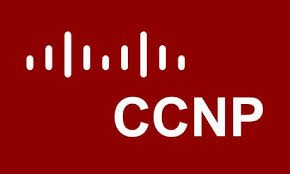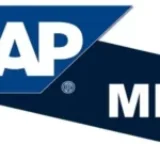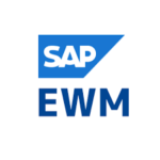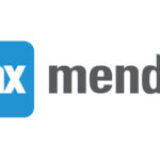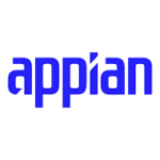CCNP
The CCNP course is designed to ensure that you learn & master the concepts of Marketing techniques in the networking field and pass the certification exam on your first try. Our training will help you learn how to administer and master in Networking. The practical hands-on learning approach followed in the course will ensure you get job-ready by the end of it.
About Course
We at Golive classes provide world-class CCNP Online Training
Golive classes are the pioneer in providing CCNP certification training with Industry-led trainers and comprehensive schedules. We framed our syllabus to match the real world requirements for both beginner and advanced levels. We handle our training in either weekday or weekend programs based on participants’ requirements.
CCNP Online Training helps procure the credentials of CCNP certificates from Cisco that is highly demanded by companies before placing networking candidates. This training is focused on routing, switching, and 300-135 TSHOOT. Implementation of networks and optimization of security requires specialized knowledge that is acquired through this CCNP Online Course.
What is this course about?
The CCNP Certification Course from Golive Classes is ideal for network engineers who are looking to expedite their career growth with new skills and experience. This course aims to make students proficient in installing, troubleshooting, configuring LAN, WAN, and dial access networks. This is an online course where the student can attend live classroom training with live instructors and project support.
What are the training Objectives of CCNP online training?
- Router and Routing Protocols
- Enhanced Interior Gateway Routing Protocol
- Advance Redistribution
- Aggregating Switch Link
- Layer 3 High Availability
- Border Gateway Protocol
- Advanced Spanning Tree Protocol.
Why should you learn the CCNP?
Many top companies are incorporating CCNP applications in their deployments, and this created more demand for professionals working on CCNP worldwide.
Certified CCNP Professionals are earning high salaries compared to professionals working on other technologies.
The average salary of a certified CCNP professional is $133,590 per annum.
Who should learn in this CCNP training?
- System Engineers
- Network Specialists
- Network Consultants
- System Integrators
- Aspirants aiming for a career in the prospective field.
What are the prerequisites to learn this course?
Previous knowledge of computer networks basics is enough for attending this training.
Who should learn in this CCNP training?
This training is beneficial for network engineers, network administrators, system engineers, network specialists. CCNP training also helps entry-level engineers and IT technicians to go ahead in their careers.
What are the advantages to learn CCNP course?
- Router and Routing Protocols
- Enhanced Interior Gateway Routing Protocol
- Advance Redistribution
- Aggregating Switch Link
- Layer 3 High Availability
- Border Gateway Protocol
- Advanced Spanning Tree Protocol.
Why GoliveClasess?
1.We provide training along with Real-time concepts with case studies
2.Project Explanation
3.Interview Questions
4.Resume preparation
5.Technical Assistance even after Course Completion
6.Career Guidance
7.life time video recordings Acess
8.The assistance provides in consulting and placement
9.Free other courses will be provided free of cost.
Course Curriculum:
Internetworking Review:
- Network Reference Models (OSI model review, Data Encapsulation/decapsulation, The Cisco Three-Layer Model)
- LAN and WAN Cabling Specifications (Ethernet media connections 10Base and 100Base media types, Cabling Devices RJ-45, straight-through, cross over and roll-over cables, serial transmissions, WAN connector types, DCE/DTE)
- Networking Devices and Cisco Products (Router, Switch, and Hub device review, Collision, and Broadcast
- Domains, Selecting Cisco Devices, Routers, Switches, Hubs)
Switch Technology:
- þÿ S w i t c h f u n d a m e n t a l s ( B r i d g e s v s . S w i t c Store & forward, Cut through, fragment free)
- Spanning Tree Protocol (Network redundancy, Loop avoidance with spanning tree protocol, STP port states, root bridge, designated bridge, etc.)
- Cisco IOS Basics (Using the Command Line Interface (CLI), Getting help, using show commands, Accessing different privileged modes)
- Catalyst 1900 Switch Configuration Commands (Configuring the switch device for Hostname, IP address, etc., Hands-on lab activities using the CCNA e-trainer program)
Virtual LANs (VLANs):
- Defining VLAN Components (Describe VLAN technology, Static vs. Dynamic VLANs membership, Frame Tagging and Inter-Switch Link Protocol, Trunking, and VLAN Trunking Protocol, VTP modes of operation, Routing between VLANs)
- Configuring VLANs
- Reviewing VLAN configuration
Router IOS:
- Router Components, the Boot Sequence, and Basic Setup (Managing a Cisco Internetwork, Router boot, and Configuration registry numbers)
- Router Commands and Configuration (Config and IOS Management Commands, Using the Router IOS, setting up a Cisco Router, Accessing the CLI and Privileged modes, Configuration modes, and Interfaces and subinterfaces configuration, Setting passwords, banners, hostnames)
- Configuration and IOS Administration (View router config, backup IOS with TFTP)
- Documenting a Network with the CDP (Use the Cisco Discovery Protocol to locate neighbors)
IP Protocol Suite:
- TCP/IP Review (TCP/IP and the DOD models, Port number assignments, UDP, TCP, and IP header information, ICMP, ARP and RARP operations)
- IP Addressing (Binary/Decimal Conversions, Address classes)
- Subnetting (why subnetting, defining networks and hosts, subnetting process)
- Configuring IP (IP address, subnet mask, and default gateway settings on switch and router)
IP Routing:
- þÿ R o u t i n g O v e r v i e w ( T h e r o u t i n g p r o c e s s , distance-vector, link-state, hybrid)
- RIP (RIP overview, configuring and verifying RIP)
- IGRP (IGRP overview, configuring and verifying IGRP)
- Internetwork Connectivity (Build a host table, Telneting to another device, using trace and ping commands)
The IPX Protocol:
- IPX Overview (RIP and SAP, IPX addressing, encapsulation methods)
- Configuring IPX on a Router (addressing, routing, encapsulation types, load balancing)
- Verifying IPX Configuration (Showing and verify IPX config, routing tables)
Access Lists:
- Access List Overview (standard vs. extended, inbound vs. outbound, syntax, guidelines)
- IP Access Lists (Standard & Extended IP access lists, controlling telnet access)
- IPX Access Lists (Standard & Extended IPX access lists)
Wide Area Networking Protocols:
- WAN Overview (WAN connection types, HDLC review)
- PPP (PPP review with authentication methods)
- ISDN (ISDN review and terminal types, BRI vs. PRI)
Wide Area Networking Protocols:
- ISDN (Dial on Demand Routing DDR)
- Frame Relay Connections (Frame Relay terminology, encapsulation, DLCIs and LMI, Creating sub interfaces on the router, mapping Frame Relay interfaces)


